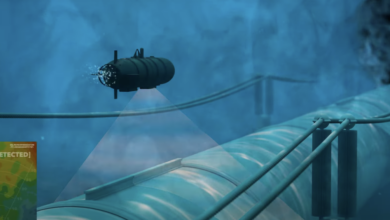Raytheon to Modernize Tactical Radio Frequency Sensors for DARPA
DARPA has awarded Raytheon a $15-million contract to enhance the electronic capability of tactical radio frequency sensors.
Under the agreement, the firm will leverage “high-power density” Gallium Nitride transistors that enable 16 times more output than common Gallium Nitride transistors and traditional semiconductors while sustaining operating temperature.
Once integrated, the technology is expected to boost communication coverage and radar resource management handling in different military applications.
Raytheon will work with the US Naval Research Laboratory, Stanford University, and Diamond Foundry to grow diamonds that will be used as the project’s thermal conductor.
Meanwhile, the University of Maryland, Penn State University, Michigan State University, and Cornell University will lead performance analysis and supply additional capabilities required for the initiative.
“Our engineers have unlocked a new way to produce Gallium Nitride, where thermal management is no longer a limiting factor,” Raytheon Advanced Technology President Colin Whelan stated.
“These new system architectures will result in sensors with enhanced range.”
Raytheon facilitates Gallium Nitride research and development projects that benefit in-service defense systems, such as the APG-79(v)4 and SPY-6 active electronically scanned array or AESA radars, GhostEye 360-degree surveillance and fire control sensors, Lower Tier Air and Missile Defense Sensors or LTAMDS, and the Patriot a surface-to-air missile system.
Supporting THREADS Program
The contract aligns with DARPA’s ongoing Technologies for Heat Removal in Electronics at the Device Scale (THREADS) program launched in 2022.
THREADS seeks new materials to make circuits used for radio frequency amplification exceed their inherent thermal limits.
Currently, radio frequency systems run below their maximum capacity because existing transistors, the most critical part of amplifying systems, burn during exhausting processes.
“Wide bandgap transistors, such as Gallium Nitride (GaN), were developed specifically to improve output density in power amplifiers – and GaN does provide a greater than 5x improvement compared to previous-generation transistor technology,” DARPA THREADS Program Manager Thomas Kazior explained.
“We also know that a further order-of-magnitude increase in power output is possible in GaN, but it can’t be realized in sustained operation today due to excessive waste heat.”
“If we can relax the heat problem, we can crank up the amplifier and increase the range of radar. If the program is successful, we’re looking at increasing the range of radar by a factor of 2x to 3x.”












